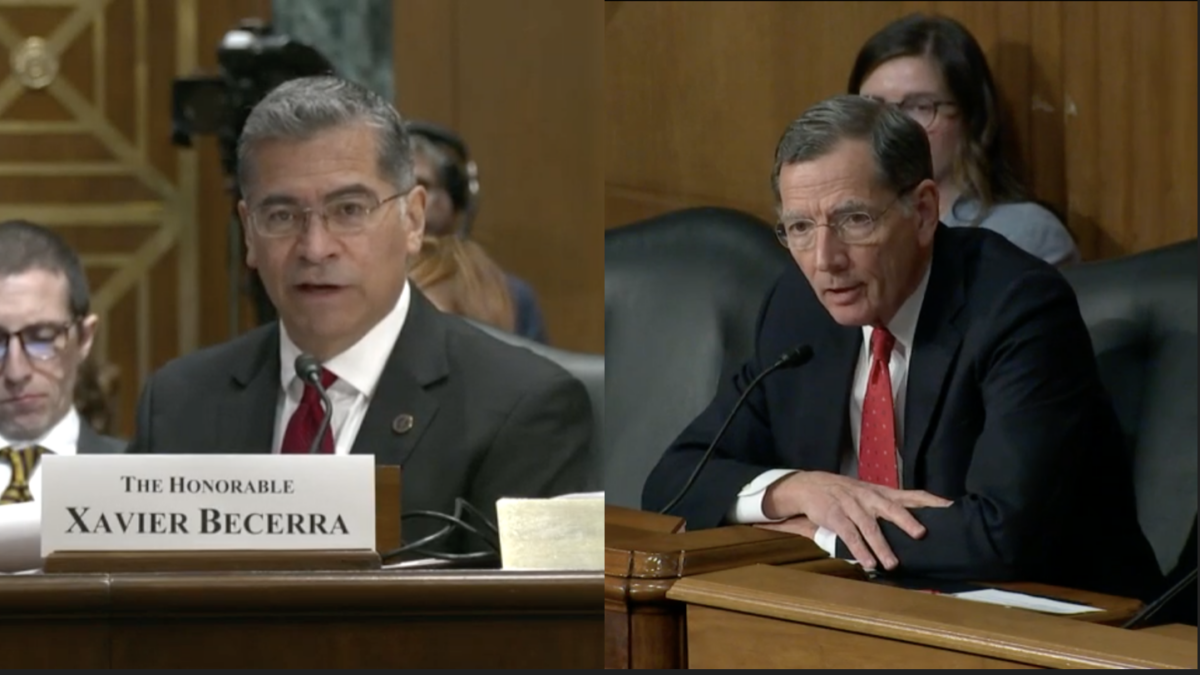Acting Homeland Security Secretary Kevin McAleenan told a House panel Thursday that U.S. border authorities are encountering fewer large groups of migrants since Mexico began stepping up enforcement efforts at its southern border in June.
Large groups have been a persistent feature of the border crisis, with groups of hundreds—in one case, more than a thousand—of mostly Central American families showing up at Border Patrol stations, sometimes in remote areas, and turning themselves in.
But ever since early June, these groups have become less frequent as the number of border-crossers has dropped. Border Patrol apprehended132,000 illegal immigrants in May compared to just 88,000 in June. That’s still a lot—more than double the number of arrests in June 2018—and does represent a substantial decrease.
McAleenan attributes the decrease in large groups, and the overall drop in numbers of illegal immigrants crossing the border, to Mexico’s enforcement efforts. “Since Mexico has started to do their interdiction operations, address the transportation networks on their highways, we have seen a dramatic drop.”
But is Mexico, or the heat? Every year going back decades, the number of apprehensions on the southwest border has dropped from May to June as temperatures rise along the Rio Grande and crossing becomes more dangerous. Numbers tend to stay low through the hot months of July, August, and September.
This year’s drop of nearly 35 percent was historically on the high end, but not unprecedented. In 2006, there was a drop of more than 35 percent from May to June, and in 2000 the drop was more than 30 percent. (The one exception is 2017, when June apprehension were 10 percent higher than May, but that year the number of apprehensions was at a 50-year low.)
The answer might be that’s it’s a little of both. The reason Border Patrol is seeing fewer large groups is because large groups are usually associated with migrant caravans, which have been specifically targeted by Mexican authorities because they’re easy, visible targets. Breaking up caravans and arresting leaders and organizers, which Mexican authorities began doing in early June as part of their efforts to avoid punitive tariffs from the Trump administration, made it seem like Mexico was taking concrete actions to stem the flow of migrants through its territory.
But caravans are only one aspect of the illegal immigration industry in Mexico. Usually, those who travel in caravans can’t afford to hire smugglers, and join a caravan to gain some measure of safety. Indeed, Central Americans transiting Mexico are often targeted by cartels, gangs, and corrupt officials for extortion, bribery, kidnapping, and in many cases sexual assault and human trafficking.
The whole point is to avoid the black market in human smuggling that’s making billions off the border crisis. There’s a reason these caravans don’t travel through the State of Tamaulipas on the Gulf: cartels control the migrant routes there, and no one crosses the border unless they pay. Hence, the large groups that break off from caravans as they approach the U.S.-Mexico border tend to show up in remote areas not controlled by cartels, like the deserts of New Mexico and Arizona, or downtown El Paso.
To be sure, targeting caravans is partly responsible for the drop in apprehensions. But so is the heat. Families, especially those with small children, will be less inclined to make what could be a long trek through harsh, remote terrain in temperatures that often exceed 100 degrees in the summer months. Hence the historical trend of fewer arrests in June compared to May.
The larger point here is that relying on Mexican officialdom to solve the border crisis isn’t going to work. The Trump administration can plausibly take credit for cajoling Mexico into stricter immigration enforcement, but lucky for them Mexico’s efforts coincided with the time of year apprehensions drop anyway.
In reality, there’s a lot of money to be made on the migrant crisis by cartels, smuggling organizations, and corrupt Mexicans officials. Relying on the newly created Mexican National Guard and the central government in Mexico City isn’t a long-term strategy for ending the crisis. If you don’t believe that, just wait till temperatures drop on the Rio Grande.









